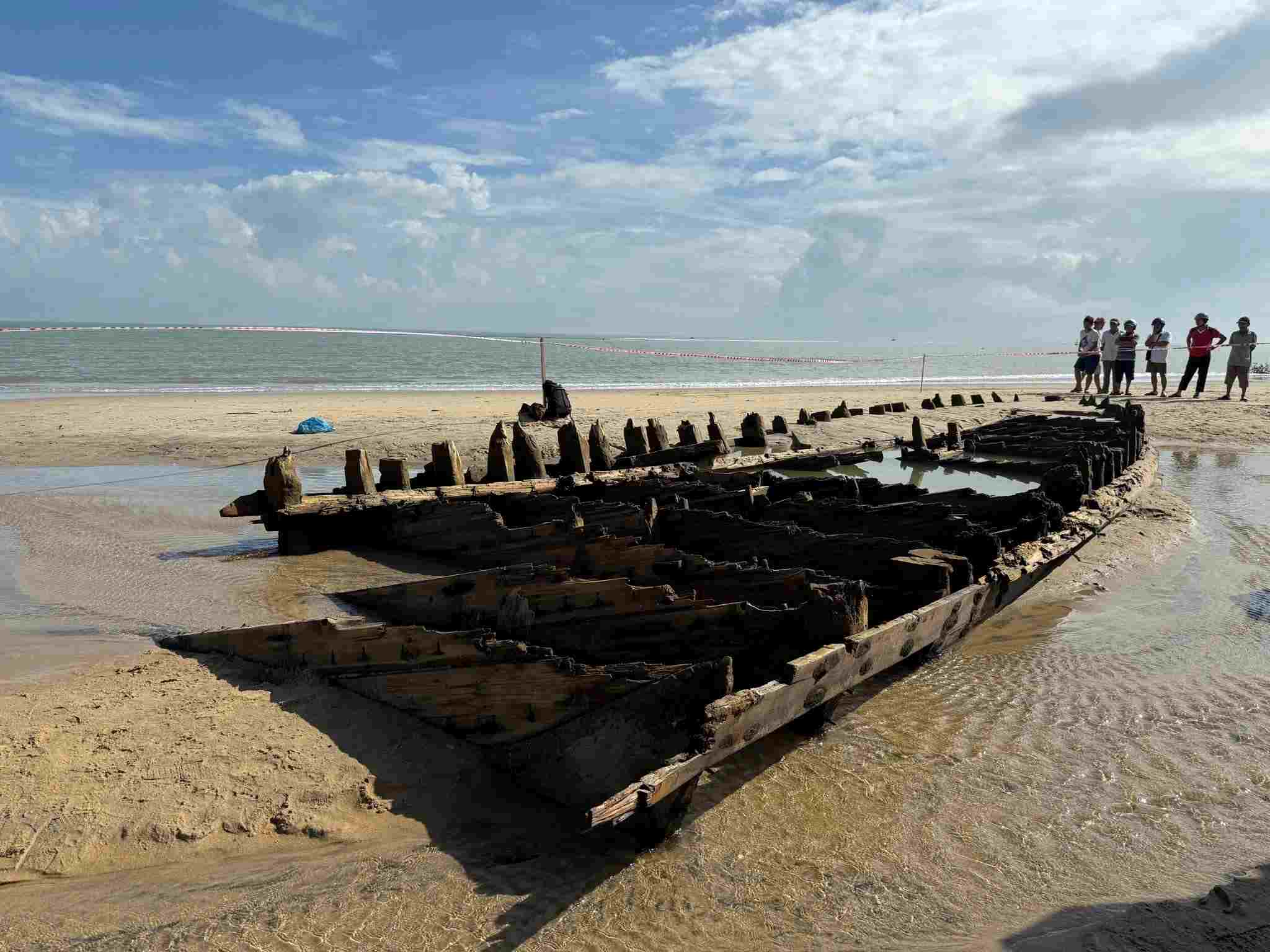Speaking with Lao Dong, Vice Chairwoman of Da Nang People's Committee Nguyen Thi Anh Thi said that the city has directed the cultural sector to coordinate with the locality and the Hoi An Cultural Heritage Conservation Center to urgently find solutions for the ancient wooden ship that has just been discovered after the storm in Hoi An.
On November 12, the Hoi An Cultural Heritage Conservation Center had a working session with the Department of Culture - Sports and Tourism of Da Nang City to discuss a plan to handle the ancient wooden ship discovered on the beach of Hoi An Tay ward. According to the assessment, the ship is large in size, has many solid, heavy wooden structures and is being strongly affected by landslides and waves.
Mr. Pham Phu Ngoc - Deputy Director of the Hoi An World Cultural Heritage Conservation Center - said that the proposed option is to excavate and relocate all artifacts to the museum for long-term preservation.
According to Mr. Ngoc, due to eroded terrain, local conservation will pose many potential risks. The center proposed an emergency excavation using the " wet excavation" method - using a suction machine to remove sand and water, combined with a water barrier system to protect the relic. After that, the entire ship will be moved to Hoi An Museum for preservation in a special environment to prevent wood from rotting.
The survey results show that the ship's structure is still quite intact, and the axle can be salvaged completely. However, the excavation requires strict compliance with professional procedures because the ship's body can contain many valuable ancient relics.
According to the Department of Culture, Sports and Tourism of Da Nang City, salvaging and preserving ships is a complex task that must be carefully calculated in terms of technical plans and costs. In the immediate future, the locality is required to strictly protect the scene, avoiding the impact of waves and people.
The ship was first discovered in December 2023, believed to date from the late 14th to the 16th century, reflecting the ancient sea trade of Southeast Asia.













